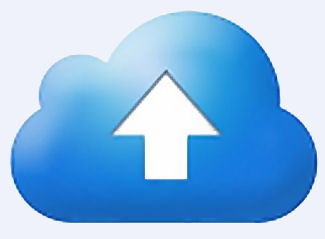Microsoft Delivers Store Preview And Touts Azure Backbone

Microsoft continues to woo developers after touting Azure Cloud OS as a back end for Windows 8 and Phone 8 apps
Microsoft continues its developer love-in by delivering a preview of the new Windows Azure Store.
It also demonstrated how Windows Azure can provide a common back end to power Windows 8 and Windows Phone 8 apps.
Store Preview
The preview of the Windows Azure Store includes a catalogue of app services, ranging from monitoring and scaling, to mail delivery to databases.
“We’re releasing our Windows Azure Store this week,” said Scott Guthrie, a Microsoft corporate vice president. The store is a list of services from Microsoft’s partners that users can purchase, including services from the likes of AppDynamics, Aspera and New Relic, among many others.
During Day Two of its primary developer conference, Build 2012, on the Microsoft campus, the software giant gave developers what they’ve been looking for – lots of code-filled examples of how to move ahead with Microsoft tools and technology. Satya Nadella, president of Microsoft’s server and tools business introduced developers to using Windows Azure as the back end to creating apps for Windows and Windows Phone.
 Nadella, along with Guthrie and other Microsoft cloud and developer luminaries, demonstrated how to build apps that take advantage of Microsoft’s cloud services.
Nadella, along with Guthrie and other Microsoft cloud and developer luminaries, demonstrated how to build apps that take advantage of Microsoft’s cloud services.
“If you want to create device-centric apps … and you want to span Windows 8 and Windows Phone 8, the best way to do that is to put that in the cloud,” Nadella said.
“We want the Cloud OS to be the platform any developer will want to build on,” Nadella said in an 31 October blog post. “As part of that commitment, today we also announced a series of updates for Windows Azure, including Website language support for .NET Framework 4.5 and Python, making this service even more open for developers, the preview of the new Windows Azure Store and the availability of Visual Studio Team Foundation Service.”
Indeed, Nadella spoke of the need for improved application lifecycle management (ALM) as part of the team development process.
“Any talk of cloud-scale apps is going to be incomplete if you don’t talk about the lifecycle of DevOps,” he said. With that he announced the general availability of Team Foundation Service (TFS) and introduced Jason Zander, another Microsoft corporate vice president, to demonstrate some of the new capabilities. As an ALM tool, Team Foundation Service includes agile project planning and management tools, version control, build automation and continuous deployment automation.
“We’re working together as a team and one of the things we need to do better is co-ordinate all of that,” Nadella said of TFS. “We’re having a tremendous amount of traction with the enterprise adopting Azure,” he said.
Nadella also wrote: “Inside Microsoft the cloud momentum and focus is real and palpable. We are building some of the most diverse Internet-scale workloads in the industry: SkyDrive, Office 365, XBOX Live, Bing, Ad Center, Dynamics … the list goes on. All of this has pushed us to reimagine the Windows back end, to re-examine the core hardware abstraction at the data centre and multi-data centre level, as well as building a new modern application platform. We call this the Cloud OS. What the Cloud OS means to the developers at Build is that regardless of their preferred language, tool or framework, Windows Azure is the most complete platform to build on.”
Azure Back-end
Microsoft also announced the extension of Windows Azure Mobile Services to include support for Windows Phone 8, in addition to Windows 8 on which third-party apps such as USA Today depends, Nadella said. Windows Azure is the back-end engine that makes it possible to provide push notifications (USA Today headlines, money and tech) on a single framework that supports multiple formats while allowing the apps to be distributed broadly through the Windows Store, he said.
In the enterprise, identity management and extending business processes are key for developers, Nadella noted. “Workday is a great example of an ISV building a Windows 8 enterprise app for financial and human resources,” he said in his post. “By integrating with Office 365 and Azure Active Directory for single sign on, they are able to securely access existing enterprise assets and provide users a seamless, intuitive experience.”
Overall, Nadella shared how developers can use Windows Azure to build apps that scale to meet the demands of high traffic, reduce costs, improve development speed, and allow for flexible, on-demand app usage.
“These apps could take lots of code, but we’ve built in services that make building these apps easy,” he said. “We’ve taken the drudgery out of building these cloud-scale apps.”
Data Platform
Nadella also said Microsoft is building a data platform that is fully capable of “storing any data, any size” and having different processing capabilities on top of that data.
Dave Campbell, a Microsoft technical fellow, demonstrated and discussed some of the new data-handling capabilities Microsoft has delivered, including Windows Azure HDInsight, which brings Apache Hadoop to Windows.
“We are using data that we get from the [cloud] services to enhance the services,” Campbell said, noting that individuals working with data and services in this way can become “service whisperers.”
For his part, Guthrie discussed Windows Azure Media Services, which enables developers to use and encode video and introduced SignalR, which is a new member of the ASP.NET family that facilitates adding real-time functionality to Web applications using WebSockets and other down-level transports.
In addition, Microsoft announced Windows Azure as the back-end for Halo 4, the popular video game. Halo 4 multiplayer mode is using Windows Azure to provide a robust, cost-effective way to scale up and down as demand ebbs and flows across the globe.
Is Microsoft Office your friend? Take our quiz.
Originally published on eWeek.